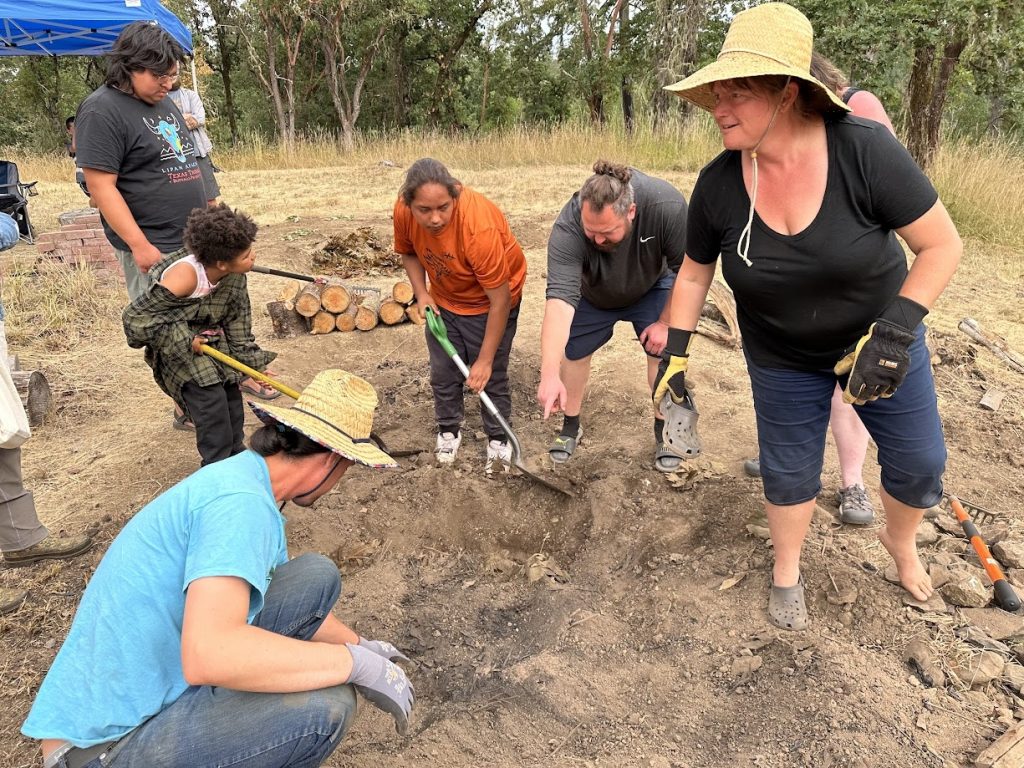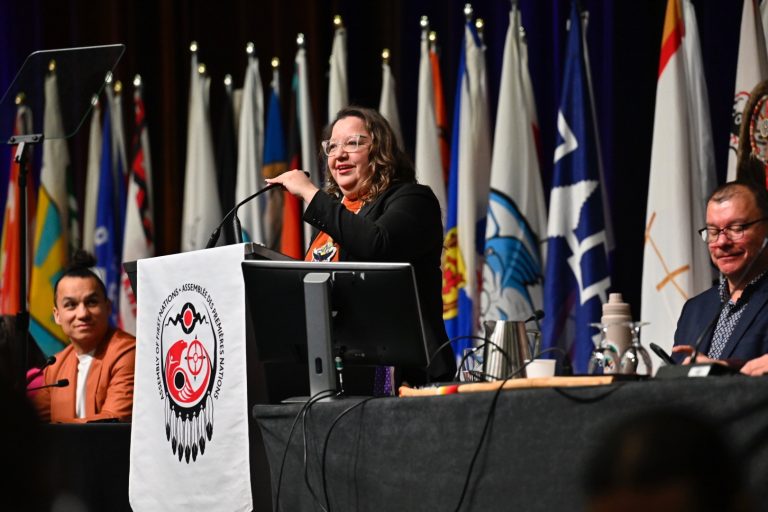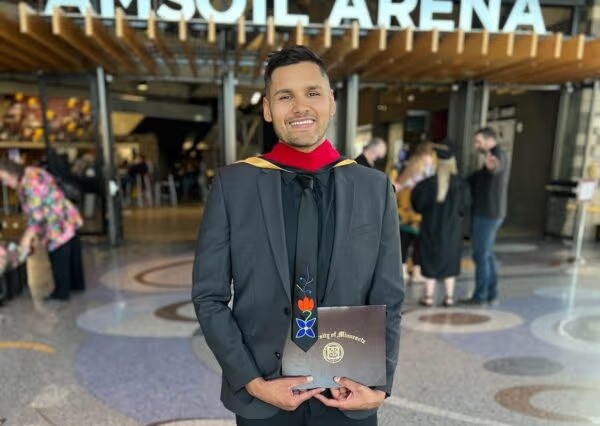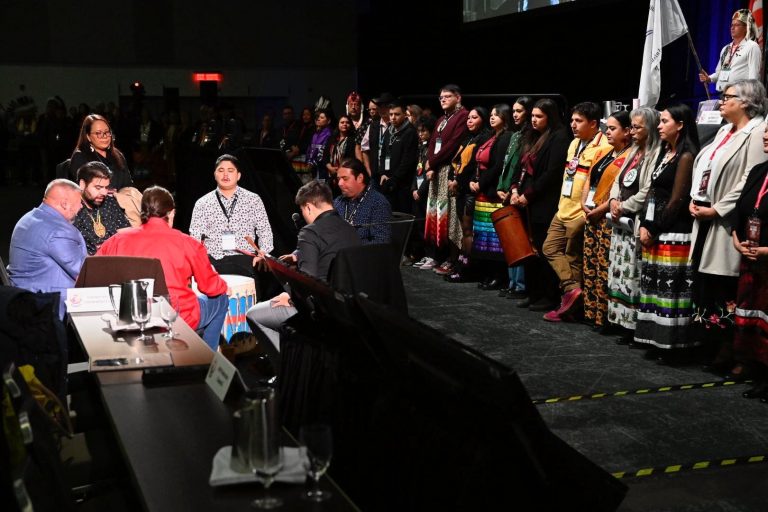Podcast: Play in new window | Download | Embed
Summer is prime time for gathering and baking camas across the Pacific Northwest, Rockies, and Plains regions.
Native people usually harvest – then bake – the plant’s bulbs, as part of their First Foods menu.
As Brian Bull (Nez Perce) of Buffalo’s Fire reports, there was even a “bake-off” held outside Eugene, Oreg. recently.
It started when members of the Traditional Ecological Inquiry Program (TEIP) under the Long Tom Watershed Council gathered in a former ash tree forest.
With shovels and digging sticks, they unearthed dozens of camas bulbs.
14-year-old Daniel Morrison said TEIP leader Joe Scott has already shared some things about camas.
“Joe told me it’s supposed to be called like the Native potato. And he said it tastes really good. I’m hoping that it goes really well. And that we don’t charcoal them.”
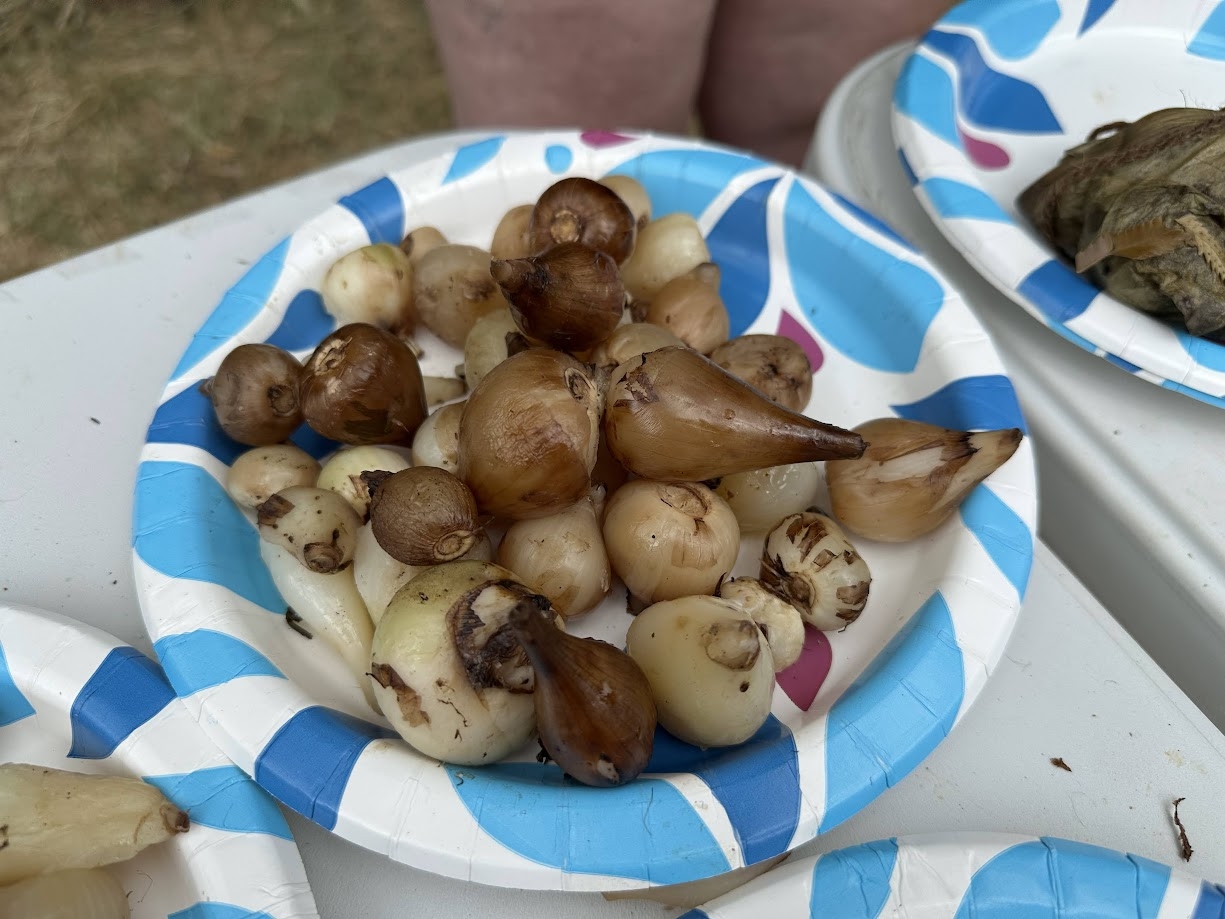
(Photo: Brian Bull)
The heartbreak of “charcoaled” camas is indescribable.
The group met the next day to assemble their camas ovens, shallow pits in the ground where fire-heated rocks are strewn.
TEIP leader and Siletz tribal member Joe Scott described how he’ll layer his packets of leaf-wrapped camas bulbs.
“Here’s what I’mma gonna do … I’m gonna throw the wet sword ferns on top of this, bunch of water, like a couple buckets of water after the maple leaves, and then a layer of skunk cabbage leaves. Put the packets on top of that, and then the alder and the ferns and then all the stuff right here.”
Oh, and there’s mugwort, hazel, and bracken ferns in Scott’s recipe, too. The whole oven hissed with steam once the water hit the hot rocks.
Nearby, the TEIP’s senior intern Samuel Bull (Nez Perce) assembled the second oven with mom’s help. This was mostly ferns, maple leaves, and camas bundled in skunk cabbage leaves … with some carrots and potatoes thrown in for experimentation’s sake, all under canvas and four buckets of water.
Flash forward to a day later. Bull decided to do a camas bake for 24 hours. The group peeled back the canvas to reveal glistening and translucent camas bulbs.
“Looks good! Ohhh, look at those beauties! Mmmhmnm. Good? It’s really good. Give me some flavor notes. Really soft, sweet. And starchy. I’m so happy. Wow.”
And yes, Bull’s potatoes and carrots came out well, too.
Scott’s batch baked for nearly 26 hours and had a small fire burning atop his oven for part of that time.
At first there’s a little concern as a few bulbs are hardened and dark … but then when the rest are unearthed.
“They’re … perfect. (laughs) They’re like a sweet gumdrop.”
The longer bake means Scott’s camas were more caramelized and sweeter, but at the end of the day, Scott said the real success of the event was creating community.
“None of these things happen in isolation. There are just so many caring, loving, passionate, compassionate people who come together to make things like this happen. Hopefully people will be coming here in a hundred years making camas, and being like, ‘I heard the story of when they used to come and do this, and they would just turn it into briquets.’”
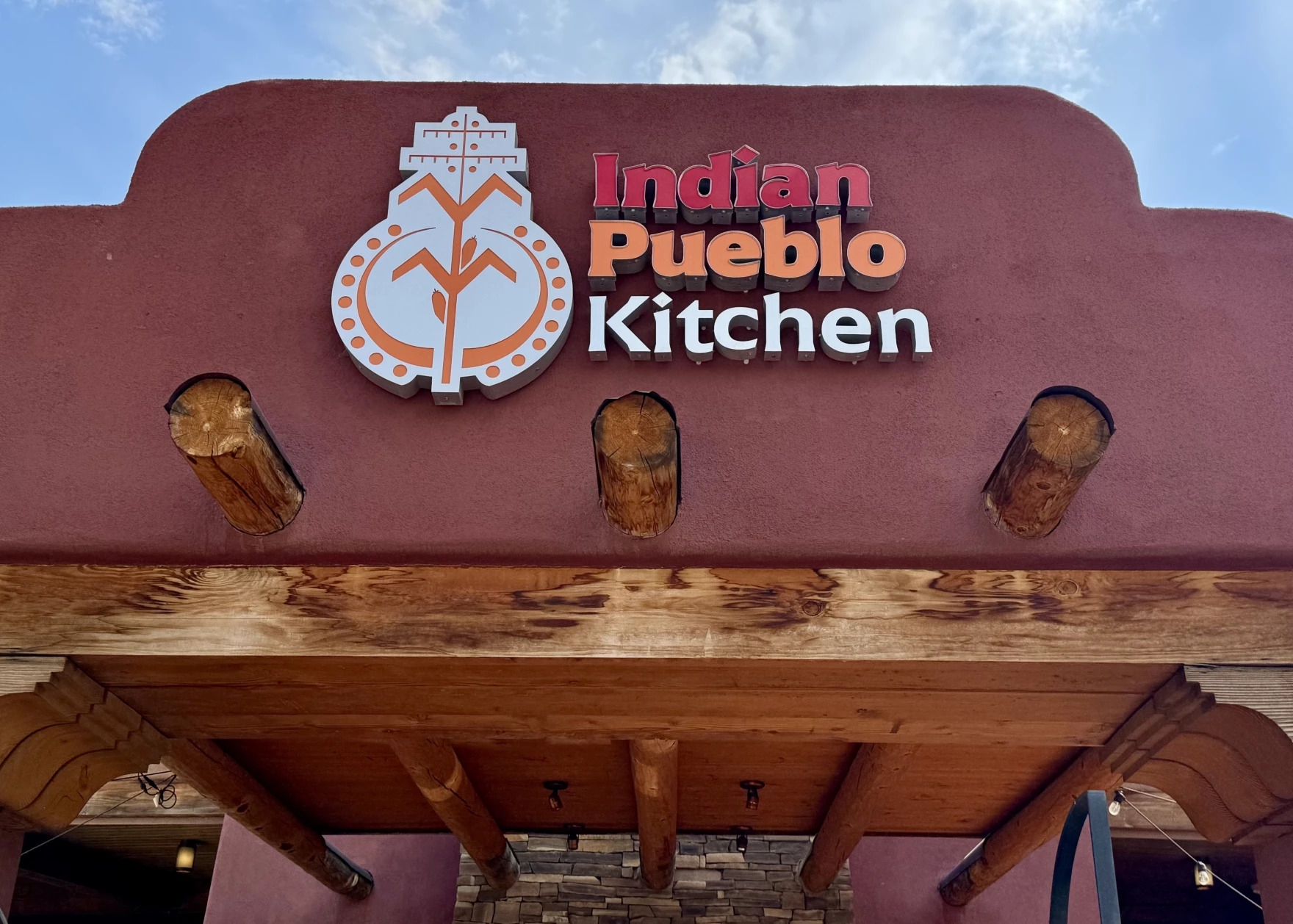
The Indian Pueblo Kitchen housed at the Indian Pueblo Cultural Center in Albuquerque, N.M. (Photo: Gabriel Pietrorazio / KJZZ)
A new food spot at the Albuquerque International Sunport features Native foods.
KJZZ’s Gabriel Pietrorazio has more.
First opening its doors in 1976, the Indian Pueblo Kitchen was reimagined in 2020.
“Every Pueblo has a different style of what they cook, what they make.”
Chef Josh Aragon is from the Laguna Pueblo and heads the kitchen at the Indian Pueblo Cultural Center on tribal land in the heart of Albuquerque.
“It’s just a combination of all the Pueblos put together all 19, as a matter of fact, and what comes out of the food is the smiles, the thoughts, the full bellies …”
From frybread and enchiladas to daily hand-baked goods, like Pueblo pies, tortillas, and lots of loaves of bread.
“Yesterday, I did three batches, so about 104 [loaves] plus 240 dough balls.”
Rita Toledo is the head baker. She’s from the Jemez Pueblo and now has to prepare even more fresh dishes to feed traveling customers at Albuquerque International Sunport.
“The bread we make, somebody’s gonna take somewhere out of state, that’s exciting.”
Get National Native News delivered to your inbox daily. Sign up for our daily newsletter today.
